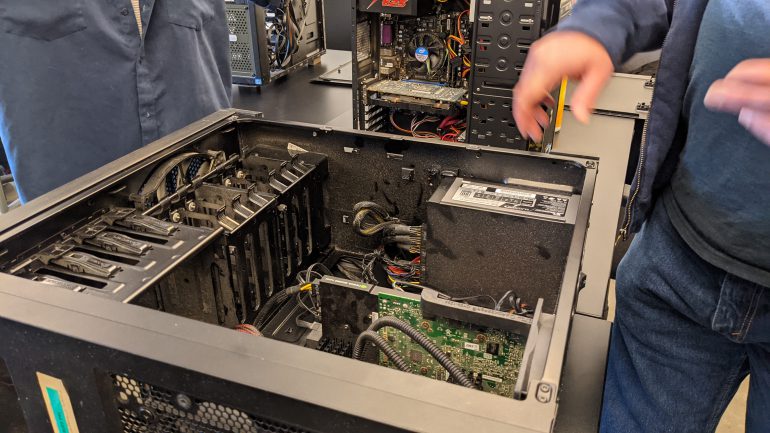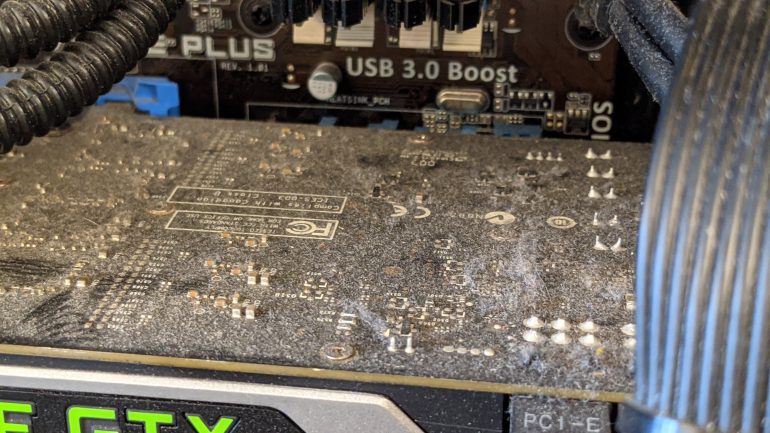Modern research labs, like so many other businesses and institutions, accumulate large collections of deprecated computer equipment as their needs change and technology advances. As old gets swapped out for new, remnants from previous technological eras collect in the dusty corners of workspaces. Bricked hard drives, slow video cards, and beleaguered processors get shoved into closets, awaiting their eventual disposal. However, not all these computer parts are without their uses. Somewhere amidst these technological graveyards there are components waiting to be rescued and repurposed for new uses.
Last week, TAG decided to plumb the depths of its storage bins in an effort to find new uses for its old tech. Stuart Thiel led a workshop with Lyne Dwyer, Michael Iantorno, and Gina Hara where they reconfigured half a dozen old, slow, or broken computers into three working, reasonably powerful machines. An exercise in “frankensteining,” the group diagnosed mysterious noises and salvaged key parts in an effort to give old TAG computers new life. While the results may not be state-of-the-art, they are serviceable machines and more than capable of serving as work stations for TAG members — especially once the dust was cleaned off of them.
Opening up an old computer is a bit like unearthing a time capsule. Technology moves at a blistering pace, and even mildly aged machines possess connections and peripherals that are no longer in use. Certain ports (firewire) and parts (disc drives) are obvious examples of this, but internal components such as hard drives and RAM chips have their own quirks as they age. Discerning what works (and how long it will last) was one of the key focuses of this workshop, in an attempt to answer the question: “how can we make a computer last years after it’s already seen 5-10 years of service?”
Of course, cracking into computers tends to unlock the inner silliness of TAG members. Some memorable phrases from the workshop include “I’d take a terabyte outta that” and “every time I open a computer, there’s blood.” Computer construction is a bit of a time-honored nerd tradition, and a fun way to return to physical TAG spaces on the (hopefully) tail end of a very long pandemic.


